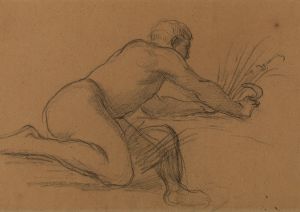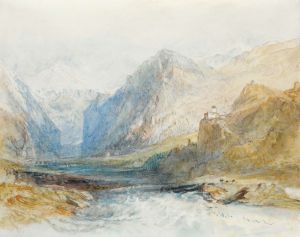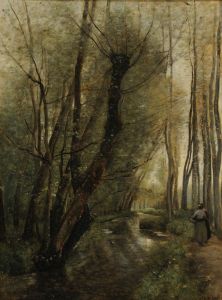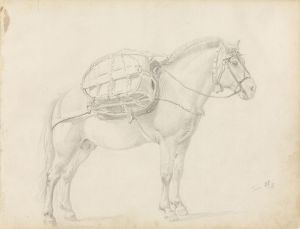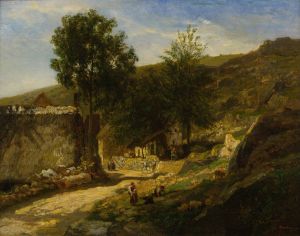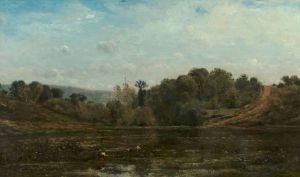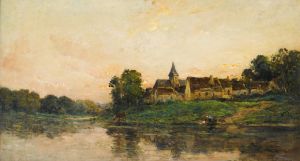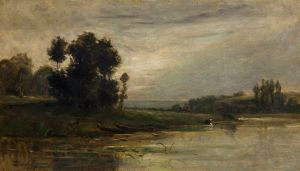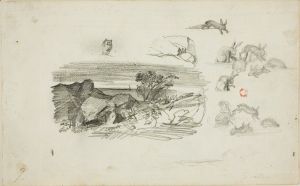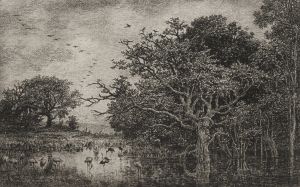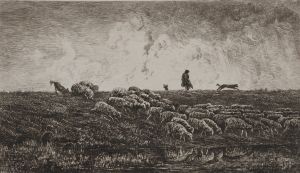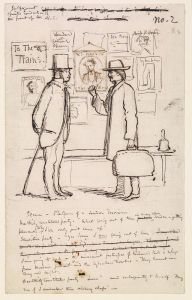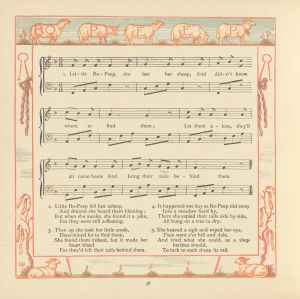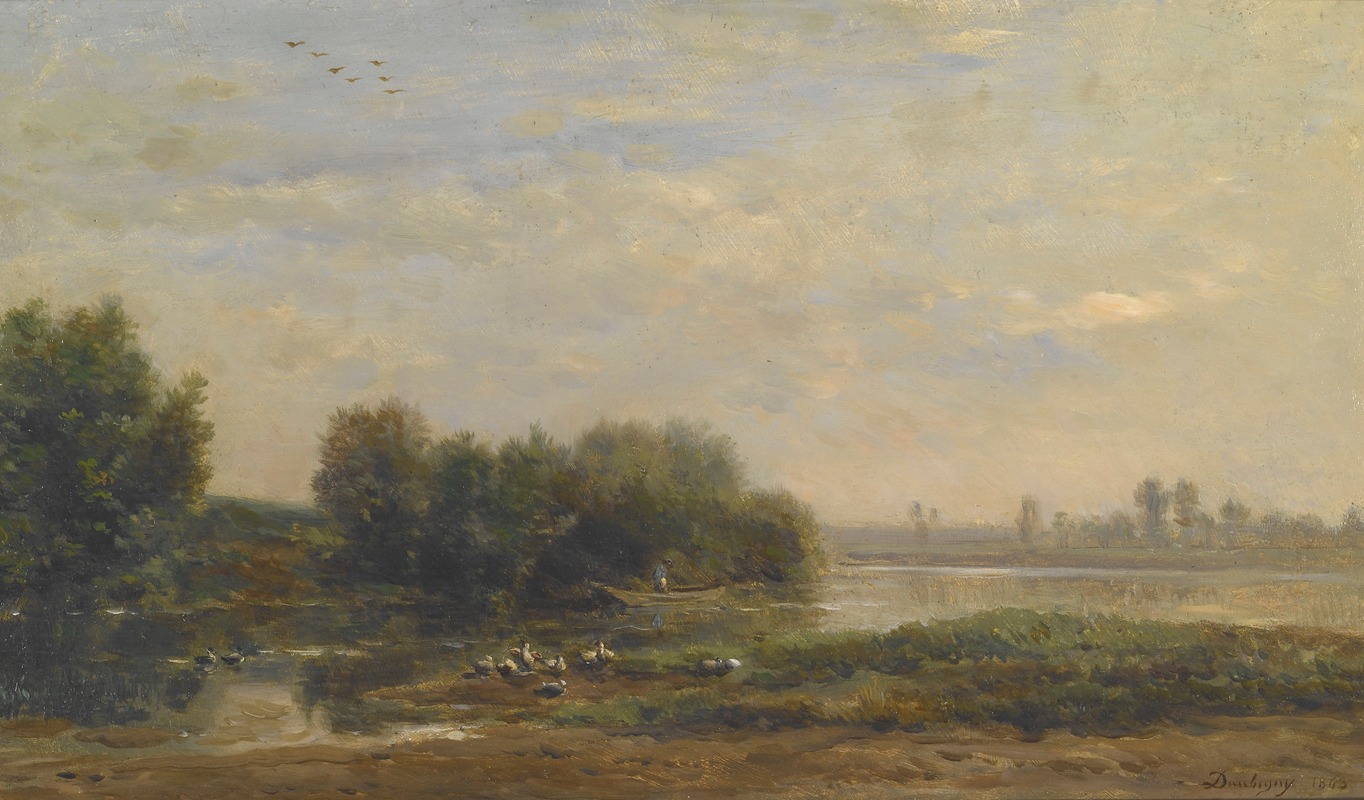
On the Oise
A hand-painted replica of Charles François Daubigny’s masterpiece On the Oise, meticulously crafted by professional artists to capture the true essence of the original. Each piece is created with museum-quality canvas and rare mineral pigments, carefully painted by experienced artists with delicate brushstrokes and rich, layered colors to perfectly recreate the texture of the original artwork. Unlike machine-printed reproductions, this hand-painted version brings the painting to life, infused with the artist’s emotions and skill in every stroke. Whether for personal collection or home decoration, it instantly elevates the artistic atmosphere of any space.
"On the Oise" is a notable painting by the French artist Charles François Daubigny, who was a prominent figure in the Barbizon School and a precursor to the Impressionist movement. Daubigny was born in Paris on February 15, 1817, and he developed a keen interest in landscape painting, often drawing inspiration from the natural scenery of rural France.
Created in 1863, "On the Oise" captures a serene and picturesque view of the Oise River, which flows through the northern part of France. This painting exemplifies Daubigny's skill in depicting the tranquil beauty of the French countryside, a hallmark of his work. The Oise River, a tributary of the Seine, was a frequent subject in Daubigny's paintings, reflecting his deep connection to the region and his appreciation for its natural landscapes.
In "On the Oise," Daubigny employs a soft, muted palette to convey the calm and peaceful atmosphere of the river scene. The composition is characterized by its horizontal format, which enhances the sense of expansiveness and tranquility. The painting features a gently flowing river, bordered by lush greenery and dotted with small boats, which add a touch of human presence to the otherwise natural setting. The sky, rendered in delicate hues, suggests a time of day when the light is soft and diffused, possibly early morning or late afternoon.
Daubigny's technique in this painting is notable for its loose brushwork and attention to the effects of light and atmosphere. These qualities would later influence the Impressionists, who admired Daubigny's ability to capture the fleeting moments of nature. His approach to painting en plein air, or outdoors, allowed him to observe and depict the changing conditions of the landscape with immediacy and authenticity.
"On the Oise" is housed in the National Gallery of Art in Washington, D.C., where it continues to be appreciated by art enthusiasts and scholars alike. The painting is an excellent example of Daubigny's contribution to the development of landscape painting in the 19th century and his role in bridging the gap between the Barbizon School and the Impressionist movement.
Throughout his career, Daubigny received numerous accolades and recognition for his work. He was awarded the Legion of Honor in 1859 and exhibited regularly at the Paris Salon. His influence extended beyond his own paintings, as he mentored younger artists, including Camille Pissarro and Claude Monet, who would go on to become leading figures in the Impressionist movement.
"On the Oise" remains a testament to Daubigny's mastery of landscape painting and his ability to evoke the serene beauty of the natural world. It stands as a significant work within the broader context of 19th-century French art, highlighting the transition from the more formal, academic styles to the innovative approaches that would define modern art.






